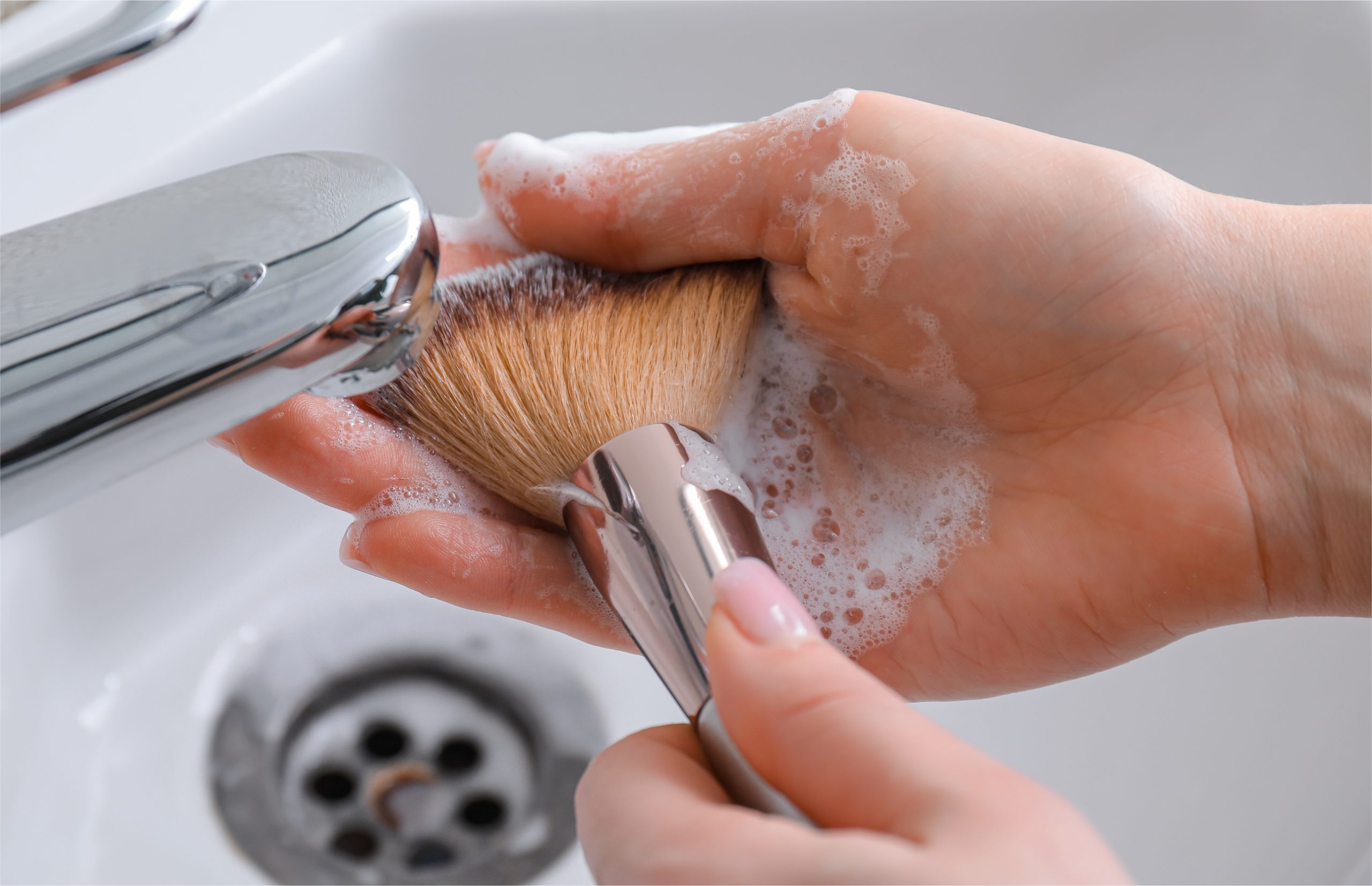If you frequently wear makeup, you’re likely to have a collection of makeup brushes lying around that serve a variety of purposes. From foundation, to blush, to contour, to eyeshadow, to eyeliner, it seems like every step of our beauty routine requires a different style of brush (or maybe you’re a one-brush-fits-all kind of gal—I’m not judging!).
But here’s the thing—do you know how often you should be cleaning those brushes? It’s a well-known fact that the majority of people are not washing their makeup brushes nearly as often as they should. Bacteria, dead skin cells, and oil can build up fast, resulting in clogged pores, increased breakouts, and even potential health risks. Dirty makeup brushes can cause serious infections like fungal infections, E. Coli, or staph infections. This is why I recommend you clean your brushes once a week for clearer and healthier skin (and never share your brushes with anyone else!). Additionally, frequently washing your brushes helps maintain their quality and keeps them soft!
There are designated products that can be used to clean your makeup brushes, and these usually do a great job. But, if the idea of spending more money on an extra product is holding you back, I have good news! Your facial cleanser can double as a makeup brush cleaner. Keep reading to discover a simple five-step process for cleaning your makeup brushes using an everyday cleanser.
Which Type of Cleanser to Use for Makeup Brushes
To clean makeup brushes, I recommend using a sulfate-free gel cleanser.
Gel cleansers are very straightforward and are meant to cut through oil and rinse away debris, which is perfect for makeup brushes. It’s also a nice bonus knowing your cleanser uses only skin-friendly ingredients.
To clean makeup brushes, my go-to is the Moisture Protecting Cleanser. It’s an effective, no-frills cleanser that does a great job of cleaning the skin while keeping it hydrated. It doesn’t contain any sulfates, which can be harsh or drying, so it’s gentle on both skin and makeup brush bristles.
A Step-By-Step Guide
Step 1:
Begin by filling a shallow bowl with warm water. Next, add 1 tablespoon of a gentle, sulfate-free gel cleanser.
Be sure to avoid the ingredients Sodium Lauryl Sulfate and Sodium Laureth Sulfate as these harsh detergents may dry out the natural hair bristles.
Step 2:
Swirl your brushes in the bowl for 60 seconds. You should see the water lather up and turn dark in color from the makeup on the brushes. For a good lather, you can also gently massage the tip in the palm of your hand.
Step 3:
Drain the water and fill your bowl back up with warm water only. Once again, swirl your brushes around for 60 seconds. Repeat if necessary until the water is clear.
Step 4:
Remove your brushes and squeeze out any excess water. Then, wipe your brushes back and forth on a clean, dry towel to absorb as much moisture as you can.
Step 5:
Finally, lay your brushes on a clean paper towel and let them dry. I personally like to lay them out in a sunny spot since sunlight destroys bacteria and helps to dry your brushes faster!
At the end of the day, cleaning your makeup brushes could potentially be one of the most important steps in your beauty routine. Not only will it prevent undesired breakouts and infections, but it will also prolong the lifespan of your brushes, saving you money in the long run. Trust me, I know as well as anybody that beauty routines can become quite lengthy, but adding this one step to your routine can help ensure a flawless, healthy-looking complexion every time.
What About Makeup Sponges?
A lot of people (including myself) like to use makeup sponges to apply foundation. So, can you use your face cleanser to clean your makeup sponges? As tempting as it may be, I would not recommend it.
Because makeup sponges are absorbent, they’re much harder to clean than brushes are. Using a face cleanser can remove makeup and oil from the outermost layer, but it’s not really going to be able to get deeper into the sponge where a lot of bacteria are harbored.
Instead, I suggest using something stronger, like Dawn or a designated beauty sponge cleaner. These are stronger and have a bigger lather than face cleansers do. Just be sure to rinse and dry your sponge really well after cleaning it to make sure none of these strong cleaning products are deposited onto your skin.
Let’s not stop at makeup brushes. Keep reading to guarantee you’re washing your face the right way!
Celebrity Esthetician & Skincare Expert
As an esthetician trained in cosmetic chemistry, Renée Rouleau has spent 30 years researching skin, educating her audience, and building an award-winning line of products. Her hands-on experience as an esthetician and trusted skin care expert has created a real-world solution — products that are formulated for nine different types of skin so your face will get exactly what it needs to look and feel its best. Trusted by celebrities, editors, bloggers, and skincare obsessives around the globe, her vast real-world knowledge and constant research are why Marie Claire calls her “the most passionate skin practitioner we know.”
Source link

